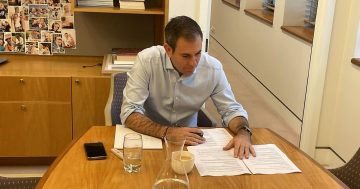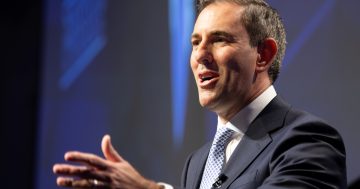Rod Myer* says fewer Australians are making voluntary superannuation payments, raising doubts about whether they will have adequate savings in retirement.

Image: Visual Destination
Voluntary contributions to superannuation are on the decline, raising doubts about whether most people will have adequate savings in retirement, according to new research from Roy Morgan.
The survey found that overall only 18 per cent of Australians were making voluntary contributions to super above the mandatory payments of 9.5 per cent of salary made by their employers.
In 2009, almost a quarter (23 per cent) of Australians were making voluntary contributions.
The reduction seems unrelated to the compulsory Superannuation Guarantee level which, at 9 per cent, was only marginally below current levels.
Not only has the percentage of Australians making voluntary contributions to super decreased, going by Roy Morgan’s figures, the overall number doing so has also shrunk.
With the current workforce at 12.6 million, the 18 per cent making voluntary contributions totals 2.26 million.
In 2009, the workforce totalled 10.9 million and the 23 per cent of those making voluntary super payments came to a total of 2.5 million.
The decline in contributions is spread right across the workforce.
In 2009, 24.5 per cent of men made voluntary contributions as did 21.1 per cent of women.
Now those figures have declined to 18 per cent of men and 18.1 per cent of women.
It is the first time women contributors have outnumbered men as a percentage.
The declines create concerns about whether most Australians will have enough to retire on.
“The low level of above compulsory superannuation contributions presents a major retirement funding problem for workers and the Government,” Roy Morgan Communications Director, Norman Morris said.
“It is generally recognised that without additional contributions, the current compulsory level on its own will not provide sufficient funds in retirement for most workers to be self-funding,” Mr Morris said.
The figures came from Roy Morgan’s periodic survey canvassing 50,000 people, Mr Morris said.
The decline in contributions was felt across all age groups with even the highest savers — those in the run-up to retirement aged between 55 and 64 — declining from 39.5 per cent to 35.2 per cent.
A major relative decline of 25 per cent was experienced among those aged between 45 and 54, with only 24.4 per cent making voluntary contributions, compared to 32.3 per cent in 2009.
More competition for the pay packet
Mr Morris said the decline demonstrated the increasing competition for the cash earned by Australians of working age.
“One of the reasons for this decline is the difficulty of engaging workers in what for most [superannuation] has a very long-term time horizon,” he said.
Younger people see the need for superannuation as being a long way away and many have lost confidence in the benefits of such long-term savings because the rules have been changed so often in recent years, Mr Morris said.
The rising cost of housing, the increased expectations around leisure activities, and rising utilities and other expenses in an environment of low wage growth also appear to be affecting people’s abilities to save through voluntary super contributions, he said.
It is also likely the many negative stories around some superannuation funds emerging from the Finance Royal Commission are also discouraging people from voluntary super savings, Mr Morris said.
Roy Morgan’s report challenges some of the assumptions made in a recent report from the Grattan Institute, which claimed most Australians would have enough to retire on without implementing the scheduled increase in the Superannuation Guarantee from 9.5 per cent to 12 per cent by 2025.
Research from Industry Super Australia (ISA) found that Grattan’s prediction “assumes everyone can top up their super with extra voluntary contributions, resulting in lifetime contributions that could be up to 50 per cent greater than the basic Superannuation Guarantee”.
Grattan also assumed “a continuous, uninterrupted 37-year working life and contributions, ignoring the reality of many workers, especially women”.
The Roy Morgan findings demonstrate that top-up contributions are increasingly out of reach for a rising number of Australians.
A spokesman for ISA said “the result needs to be confirmed by further research”.
* Rod Myer is a Melbourne journalist and writer and Editor of YourSuper at The New Daily. He tweets at @RodMyer1.
This article first appeared at thenewdaily.com.au.











